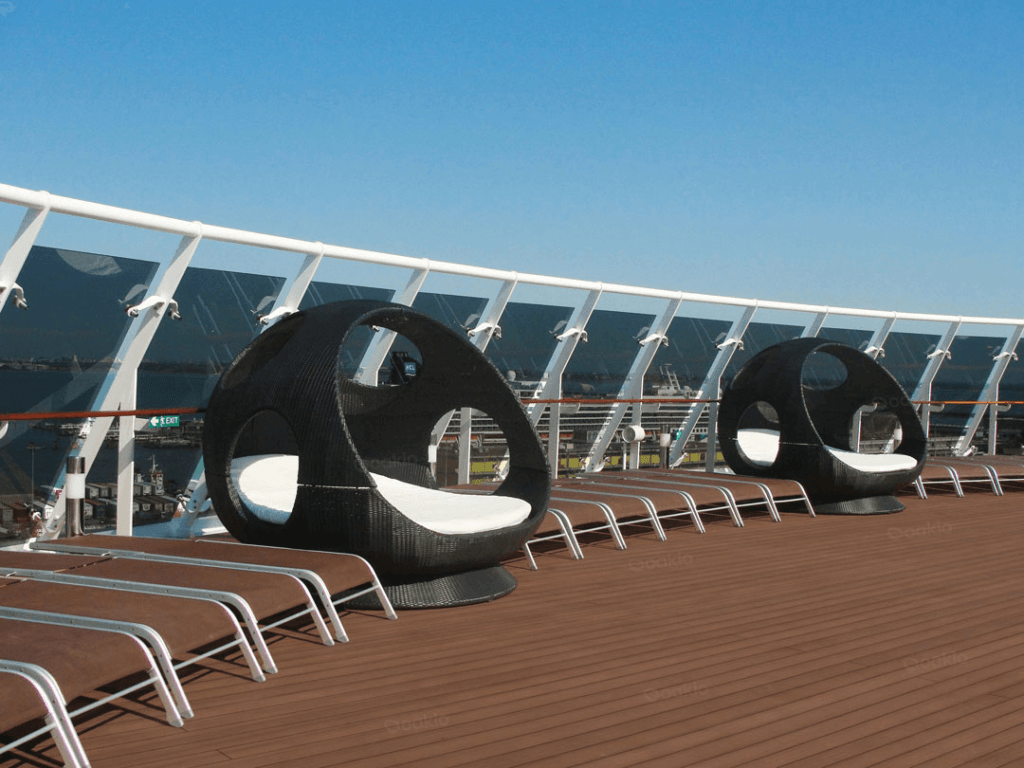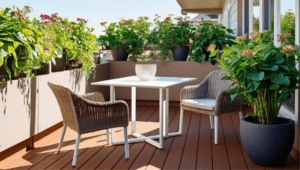Advantages and Disadvantages of Wood Plastic Composite Decking
Wood Plastic Composite (WPC) decking has become a popular alternative to traditional wood decking materials in recent years. If you want to replace wood deck with wood plastic composite decking, it is necessary to evaluate the advantages and disadvantages of composite decking. Composite decking offers a variety of advantages and disadvantages that should be carefully considered before making a decision for your outdoor space.
Understanding Wood Plastic Composite Decking
Wood plastic composite decking is a composite material that combines wood fibers or flour with plastic polymers. The result is a versatile and durable decking material that mimics the appearance of natural wood while offering enhanced performance and longevity. The manufacturing process involves extruding the composite material into boards, which can then be shaped and finished like traditional wood decking.
Advantages of Wood Plastic Composite Decking
Thanks to its composition and manufacture technique, wood plastic composite decking has several unique advantages compared with traditional wood deck.
- Durability: WPC decking is highly resistant to rot, decay, and insect damage, making it ideal for outdoor applications where exposure to the elements is a concern. Unlike traditional wood decking, WPC boards do not splinter or crack over time, ensuring a longer lifespan and reduced maintenance requirements.
- Low Maintenance: One of the key advantages of WPC decking is its low maintenance requirements. Unlike wood decking, which requires regular staining, sealing, and painting to maintain its appearance and structural integrity, WPC decking simply needs occasional cleaning with soap and water to keep it looking its best.
- Resistance to Moisture and Mold: WPC decking is inherently resistant to moisture, mold, and mildew, making it an excellent choice for areas with high humidity or frequent exposure to water. The combination of wood fibers and plastic polymers creates a barrier that prevents moisture from penetrating the surface of the decking, reducing the risk of mold growth and decay.
- Environmentally Friendly: Many WPC decking boards are made from recycled materials, making them a sustainable choice for environmentally conscious consumers. By using recycled wood fibers and plastic polymers, WPC decking helps reduce the demand for virgin materials and minimizes waste in landfills.
- Versatility: WPC decking is available in a wide range of colors, finishes, and textures, allowing homeowners to customize their outdoor spaces to suit their unique style preferences. Whether you prefer the look of natural wood or a more contemporary aesthetic, there is a WPC decking option to match your design vision.
Disadvantages of Wood Plastic Composite Decking
However, wood plastic composite decking also has its disadvantages when it comes to cost and specific property.
- Initial Cost: While WPC decking offers long-term cost savings due to its durability and low maintenance requirements, the initial cost of installation may be higher than traditional wood decking. However, many homeowners find that the long-term benefits outweigh the upfront investment.
- Heat Retention: WPC decking can retain more heat than traditional wood decking, especially in direct sunlight. This can make the surface of the decking uncomfortably hot to walk on, particularly during the summer months. To mitigate heat retention, homeowners can choose lighter-colored WPC decking options or install shading solutions like pergolas or umbrellas.
- Limited Natural Aesthetic: While WPC decking does a remarkable job of mimicking the appearance of natural wood, some homeowners may prefer the authentic look and feel of real wood decking. While advancements in WPC technology have improved the realism of wood grain patterns and textures, it may not fully replicate the natural beauty of timber.
- Susceptible to Scratching and Staining: Despite its durability, composite decking can be prone to scratching and staining. Careful maintenance and proactive measures are necessary to preserve its appearance and protect it from potential blemishes. Oakio’s Proshield WPC decking can be a good choice if you want to get scratch-resistant board. Its protective cap is composed of surlyn resin, the same high quality material found in golf balls. Besides, it also represents the second generation of wood-plastic composite (WPC), utilising co-extrusion technology. This advanced feature guarantees that our boards are delivered in impeccable condition upon arrival at the site.

Maintenance Tips for Wood Composite Decking
Wood composite decking requires minimum maintenance, but proper maintenance is essential for preserving the longevity and appearance. Here are some tips to keep your deck looking great for years to come.
- Regular Cleaning: Schedule routine cleaning sessions to remove dirt, debris, and stains from the surface of your wood composite decking. Use a mild soap or specialized composite deck cleaner with a soft-bristle brush to scrub away any buildup.
- Address Stains Promptly: Deal with spills and stains as soon as they occur to prevent them from setting into the composite material. Use a gentle cleaner and water to spot-clean the affected area, and avoid using harsh chemicals or abrasive cleaning tools that could damage the surface.
- Protect from Moisture: Ensure proper drainage around your WPC decking to prevent water from pooling or accumulating beneath the boards. Use waterproofing sealants or coatings to protect the wood composite from moisture damage and mold growth.
- Regular Inspections: Perform regular inspections of the deck’s hardware, including screws, fasteners, and joists. Tighten any loose screws and replace any corroded or damaged hardware to maintain the structural integrity of the deck.
By following these maintenance tips, you can prolong the life of your wood composite decking and enjoy its beauty and functionality for years to come.
Conclusion
In conclusion, wood plastic composite decking offers a host of advantages, including durability, low maintenance, resistance to moisture and mold, environmental sustainability, and design versatility. However, it is essential to consider the potential disadvantages, such as the initial cost, heat retention, and limited natural aesthetic, before making a decision. Ultimately, the choice between WPC decking and traditional wood decking will depend on factors such as budget, aesthetic preferences, and long-term maintenance considerations. By weighing the pros and cons carefully, homeowners can make an informed decision that best suits their needs and lifestyle.
Trending Reading
What Are the Differences Between the WPC Board and PVC Board?
[2025 Update] How Long Does WPC Decking Last?













